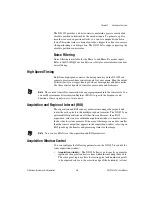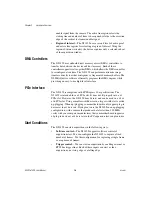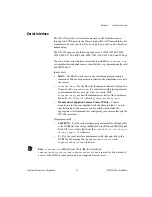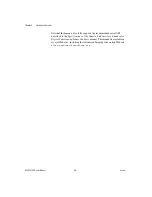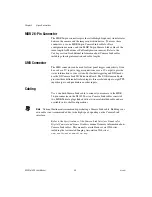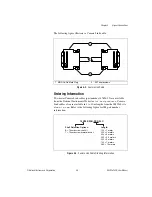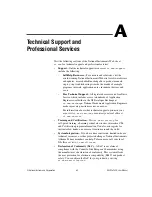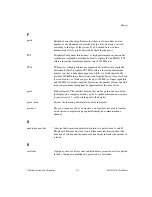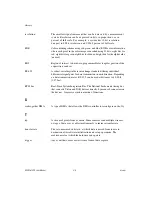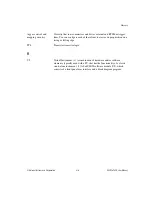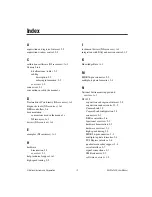
Chapter 2
Hardware Overview
2-4
ni.com
Multiple-Tap Data Formatter
Many digital cameras transfer multiple taps, or pixels, of data
simultaneously to increase the frame rate of the camera. However, the data
in each tap may not be transferred in the traditional top-left to bottom-right
direction. Also, the taps may not transfer data in the same direction.
The multiple-tap data formatting circuitry on the NI 1429 can reorder the
data from multiple taps. The data from each tap can be independently
scanned either from left-to-right or right-to-left and top-to-bottom or
bottom-to-top.
Note
Data reformatting instructions for cameras have been preprogrammed into the
camera files.
Trigger Control and Mapping Circuitry
The trigger control and mapping circuitry routes, monitors, and drives the
external and RTSI bus trigger lines. You can configure each trigger line to
start an acquisition on a rising edge or a falling edge. You also can drive
each line asserted or unasserted as a digital I/O line. You can map pulses
from the high-speed timing circuitry or the NI 1429 status signals to these
trigger lines. Seven RTSI bus triggers and one external trigger—all of
which are programmable for polarity and direction—are available for
simultaneous use. Additional I/O is available with the NI Camera Link I/O
Extension Board.
Noise Filtering
Noise filtering is available for all TTL inputs and RTSI inputs. Refer to the
NI-IMAQ Function Reference Help
for more information about noise
filtering.
Quadrature Encoder Support
The NI 1429 supports RS-422 and singled-ended phase signal decoding
from a quadrature encoder. The Phase A and Phase B outputs from the
quadrature encoder can be interfaced with the NI 1429 through the
NI Camera Link I/O Extension Board.
Refer to the
Connecting to a Quadrature Encoder
section of the
NI Camera
Link I/O Extension Board User Guide
for more information on connecting
to and using onboard quadrature counters.
















